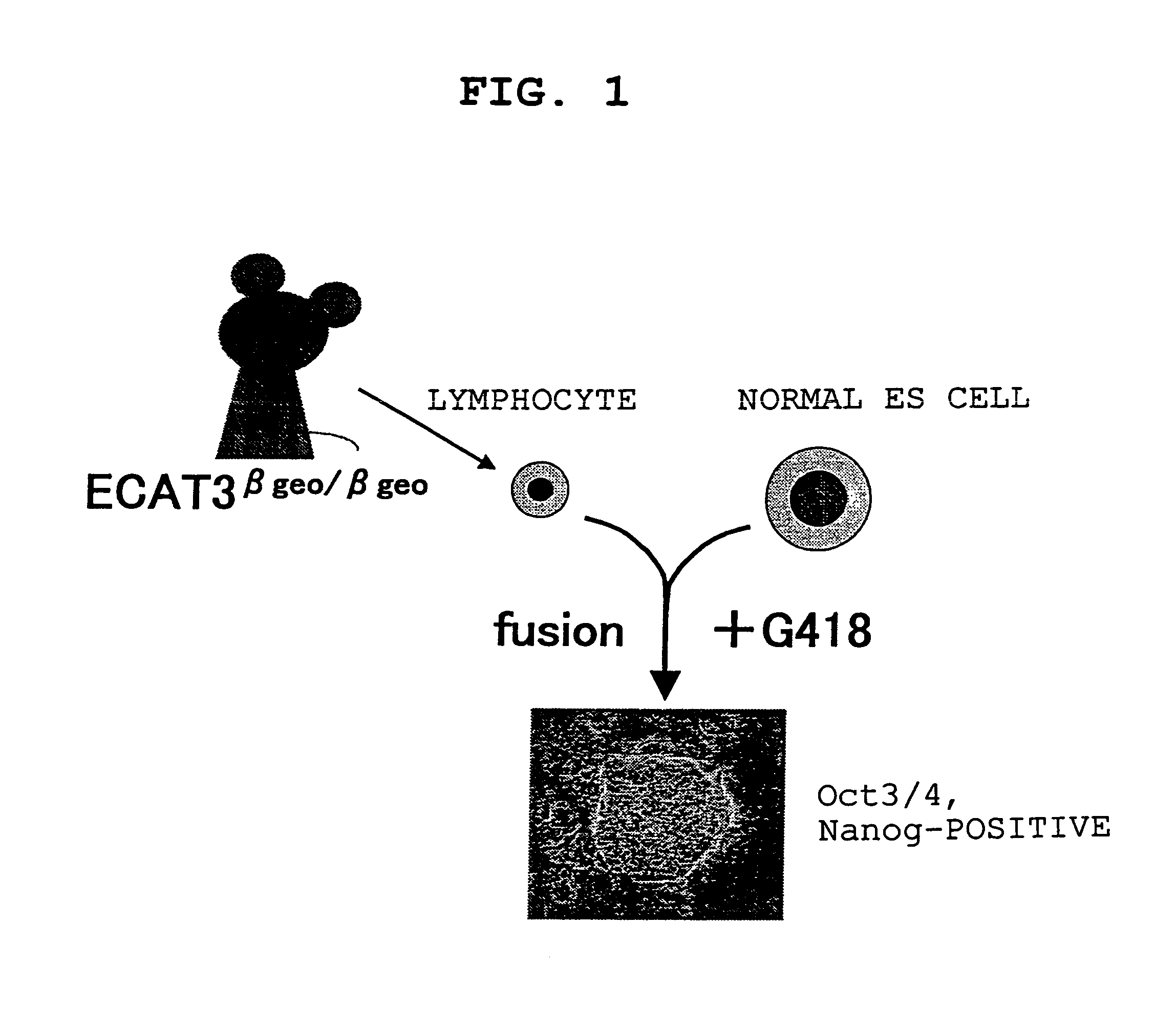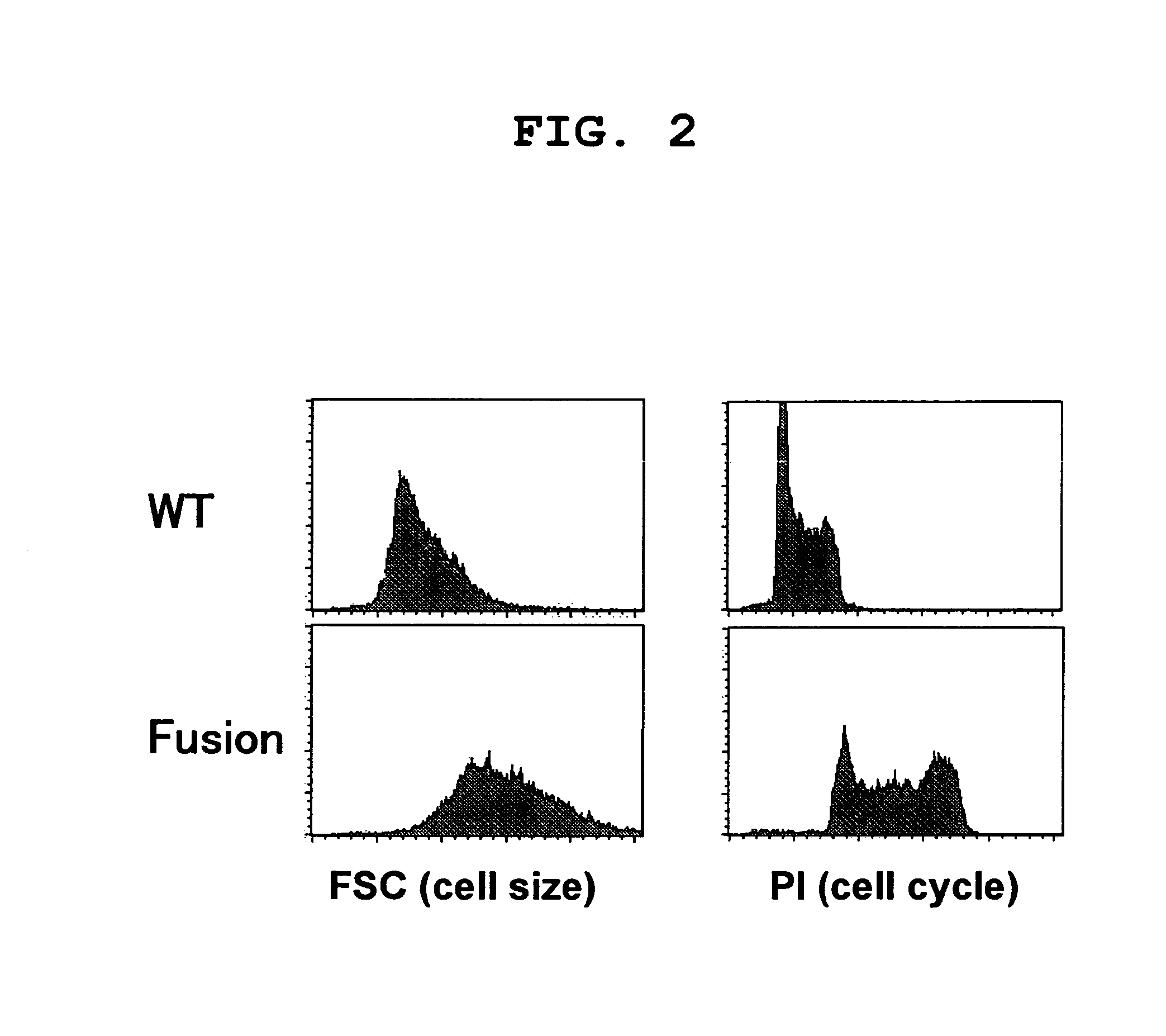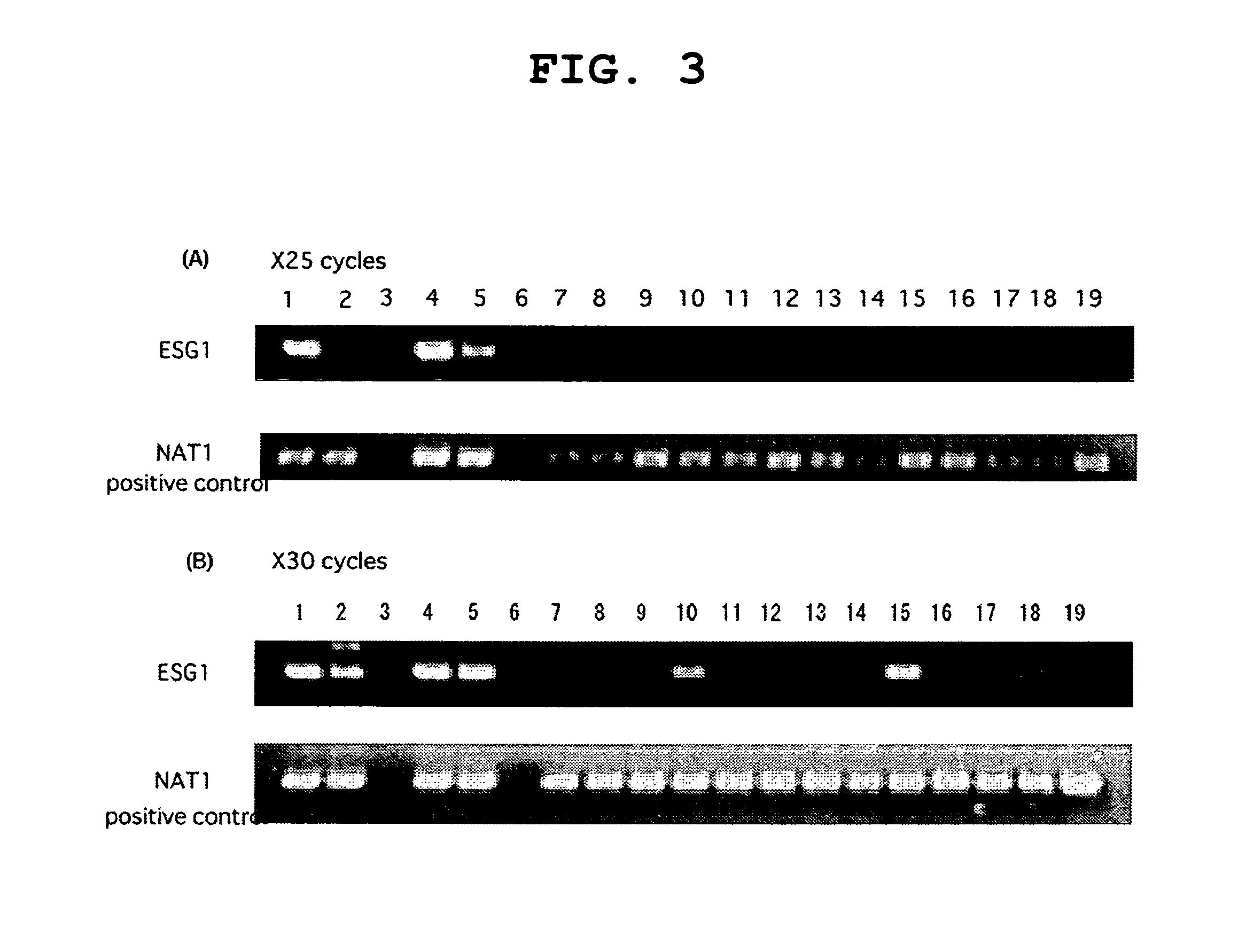Screening method for somatic cell nuclear reprogramming substance affecting ECAT2 and ECAT3
a nuclear reprogramming and somatic cell technology, applied in the direction of nucleotide libraries, drug compositions, peptides, etc., can solve the problems of poor growth potential and differentiation potential of tissue stem cells, no system enabling the efficient search of such a nuclear reprogramming factor, and difficult isolation of tissue stem cells
- Summary
- Abstract
- Description
- Claims
- Application Information
AI Technical Summary
Benefits of technology
Problems solved by technology
Method used
Image
Examples
example 1
[0351]ES-like Cell Selection System Utilizing the ECAT3 Gene
[0352]A homozygous mutant knock-in mouse wherein the coding region of the ECAT3 gene had been replaced with the fusion gene of the β galactosidase and neomycin resistance genes (β geo) to knock out the ECAT3 gene, and wherein the expression of the ECAT3 gene had been made to permit monitoring by X-Gal staining and drug resistance (hereinafter ECAT3βgeo / βgeo mouse), was prepared. This ECAT3βgeo / βgeo mouse was prepared on the basis of the description in the literature (Tokuzawa, Y., et al., Molecular and Cellular Biology, 23(8): 2699-2708 (2003)). The procedure is briefly described below.
[0353]First, the BAC clone comprising the mouse ECAT3 gene was identified from a DNA pool of the BAC library (Research Genetics) by PCR screening using a portion of ECAT3 cDNA as the primer, and the base sequence thereof was determined.
[0354]Targeting vectors for replacing the exon 3 to exon 7 of the mouse ECAT3 gene with the IRES-β geo casse...
example 2
ES-Like Cell Selection System Utilizing the ECAT5 Gene
[0357]A homozygous mutant knock-in mouse wherein the coding region of the ECAT5 gene had been replaced with β geo (ECAT5βgeo / βgeo mouse) was prepared on the basis of a method described in the literature (Takahashi, K., K. Mitsui, and S. Yamanaka, Nature, 423(6939): p541-545 (2003), Japanese Patent Unexamined Publication No. 2003-265166). Experiments were performed with the same protocol as described above using lymphocytes derived from this ECAT5βgeo / βgeo mouse. When 2×106 lymphocytes from the ECAT5⊕geo / βgeo mouse were fused with 4×105 ES cells and selection culture with G418 was performed, similar ES-cell-like colonies were obtained, though the number thereof was smaller than that obtained in the case of ECAT3 in Example 1. Hence, it was found that ECAT5 could likewise be utilized in an ES-like cell selection system.
[0358]Regarding the reason for the smaller number of colonies compared with the case of ECAT3, it was considered t...
example 3
ES-Like Cell Selection System Utilizing the ECAT2 Gene
[0359]Specific expression of the ECAT2 gene in ES cells has already been shown by Northern blot analysis (see International Patent Publication No. WO 02 / 097090). Further extensive expressional analysis by RT-PCR confirmed specific expression in undifferentiated ES cells (FIG. 3A). When the cycle number was increased, expression occurred in the testis and ovary but absolutely no expression was observed in somatic tissue (FIG. 3B).
[0360]The mouse ECAT2 genome sequence was identified by the public database Mouse Genome Resources (http: / / www.ncbi.nlm.nih.gov / genome / guide / mouse / ). A BAC clone comprising this ECAT2 genome was cloned by PCR and Southern hybridization.
[0361]A targeting vector for replacing exons 1 to 3 with β geo (fusion gene of the β galactosidase and neomycin resistance genes) or Hygro (hygromycin resistance gene) was prepared to knock out the ECAT2 gene. Specifically, a targeting vector designed to replace the exons 1...
PUM
| Property | Measurement | Unit |
|---|---|---|
| temperature | aaaaa | aaaaa |
| Northern blot analysis | aaaaa | aaaaa |
| drug resistance | aaaaa | aaaaa |
Abstract
Description
Claims
Application Information
 Login to View More
Login to View More - R&D
- Intellectual Property
- Life Sciences
- Materials
- Tech Scout
- Unparalleled Data Quality
- Higher Quality Content
- 60% Fewer Hallucinations
Browse by: Latest US Patents, China's latest patents, Technical Efficacy Thesaurus, Application Domain, Technology Topic, Popular Technical Reports.
© 2025 PatSnap. All rights reserved.Legal|Privacy policy|Modern Slavery Act Transparency Statement|Sitemap|About US| Contact US: help@patsnap.com



